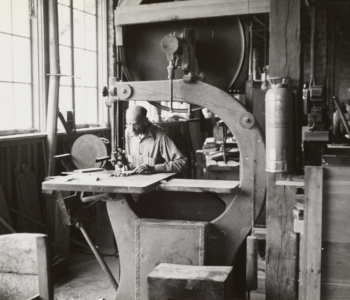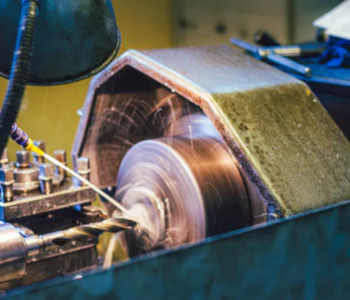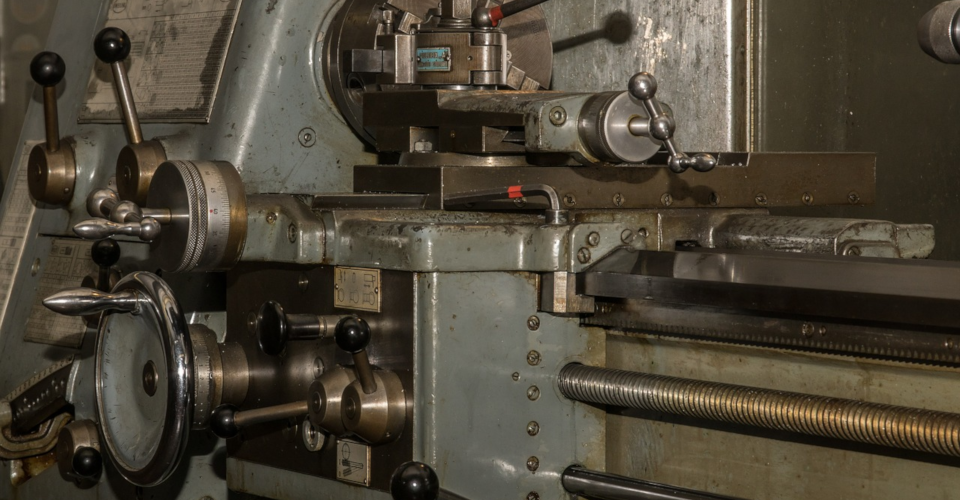The Basics of Lathe Operations: Definitions, Types, and Applications
Subtractive manufacturing methods rely on cutting down on a solid piece of raw material to come up with custom-shaped finished products. Through the precise use of cutting tools, just about any material shaped and molded without losing any of its mechanical integrity.
One of the oldest machines used for subtractive manufacturing is the lathe. As a testament to the reliability of this technology, this centuries-old technique is still a cornerstone of m many modern manufacturing processes. What’s a lathe and how does it work? How are lathe machines being used today?
What is a lathe?

A lathe is a machine that rotates the raw material around a specific axis while using a variety of cutting tools to create a design that is symmetrical along the axis of rotation. It is among the most versatile machining tools and can be used for metals, wood, plastic, and other common manufacturing materials. Some of the most common products crafted using lathes include baseball bats, table legs, screws, crankshafts, and musical instruments.
The foundations of lathe technology can be traced back to 1300 BC in Ancient Egypt. Historical artifacts such as wooden bowls and plates indicate the use of crude lathe techniques, as do tools and weapons used in ancient China.
The lathe played a central role in the Industrial Revolution of the 1700s to the 1800s. Dubbed as the “mother of all machine tools”, the lathe was instrumental in the development of other, more sophisticated machine tools. The advancement of lathe technology also accelerated during this phase, from the purely mechanical version in 1718 to the horse-drawn contraption of 1772 and the hydraulic-powered versions that came about in the early 1900s.
By the 1950s, lathe machines controlled via servomechanisms had been developed, allowing for machine-driven tools and numerical control. This eventually gave way to computerized numerical control (CNC) of lathe machines. Nowadays, both manual and CNC-controlled lathe machines continue to be used in various institutions and industries.
How does a lathe work?
In a lathe machine, the workpiece is mounted on a spindle that can rotate along a particular axis. The machine rotates the workpiece on an axis while a cutting tool is advanced along with the piece according to the desired design. Factors such as the cutting speed and the depth of the cut must be considered when operating a lathe machine.
A variety of attachments can be used with a lathe machine, each one with a unique purpose and effect on the workpiece. These mostly come with carbide tips but have different shapes, designed specifically for their purpose. The cutting tool may be fed parallel to the workpiece or at an angle. Some of the most common operations done in lathe machines are facing, tapering, contour turning, chamfering, boring, drilling, and threading.
The most prominent parts of a lathe machine are the headstock and the tailstock. The headstock is located on one end of the machine and contains spinning bearings, inside of which is a horizontal axle. Connected to the axle is a spindle, to which various work-holding accessories can be mounted. The spindle allows for the rotation of the workpiece on the machine and can be rotated either by an electrical motor or a foot-powered flywheel.
The headstock usually also has a mechanism for controlling the spindle speed relative to the motor speed. This can take the form of a gear assembly or a simple step pulley.
At the other end of the lathe machine is the tailstock. Also known as the loose head, the tailstock can be slid to any point in the bed parallel to the headstock’s axis of rotation. It also has a provision for gripping a variety of cutting tools and drill bits.
Depending on the type of lathe machine, it can either have a carriage with a cross-slide for holding of cutting tools perpendicular to the axis of rotation, or a banjo with a horizontal tool-rest. The position of the tools in either mechanism can be adjusted by hand and can be used to remove material from the workpiece at different horizontal positions.
Types of lathe machines
The reputation of lathe machines as being one of the most versatile manufacturing machines still holds true today, so it’s no surprise to find different types of lathe machines still being used across different materials and industries. This list of lathe machine types is not exhaustive but represents only the major ones being used nowadays.
Woodworking lathe
The oldest type of lathe machines, woodworking lathes are still essential tools in the woodworking industry. These are probably the simplest variations of lathe machines that are still used today. Table legs, baseball bats, bowls, and plates are traditionally made using a lathe machine.
Woodworking lathes typically have a horizontal tool-rest for the positioning of cutting and shaping tools. Working with wood involves relatively low rotational speeds at slightly over 1000 rpm. This makes it possible to use hand-held tools and sandpaper against the workpiece with minimal hazards. Larger pieces are processed at lower speeds.
Metalworking lathe

There are many extra considerations when working with metals in a lathe. Hardened cutting tools will be needed and they have to be mounted on fixed and strong mounts. Most metalworking lathes are controlled using CNC technology but also offer manual control for high-precision refining work. Rotation speeds can be controlled by servomechanisms or gear trains.
With the compatibility of metalworking lathes with CNC, they are more suitable for mass-scale production. Special precautions also have to be made when working with metals considering the high rotation speeds involved. Heat generation is one of the more pressing issues and is typically remediated by introducing cutting fluids to the workpiece, which provides both lubrication and cooling.
Depending on the tools and techniques used, lathe processing of metal workpieces can have various effects on its mechanical properties. A metal piece may develop microcracks, residual stress, hardening, and tempering.
Glass-working lathe
Lathe machines used for glass-working are completely different from lathes used for cutting away metals, wood, or plastic. Instead of a cutting tool, glass-working lathes have a mounted or hand-held flame that softens the glass, allowing it to be manipulated into different shapes and sizes. Air can also be introduced into the spindle of the headstock for glassblowing needs.
Due to the fragile nature of glass, glass-working lathes are usually rotated manuals and at very low speeds. Grinding and polishing of the finished piece can also be done with a lathe using hand-held tools.
Duplicating lathe
A duplicating or copying lathe is a special type of lathe machine which produces a piece with a shape and size based on an existing template. Invented in the 1820s, duplicating lathes were primarily used for mass production of gun stocks. Nowadays, there are duplicating lathes that are suitable for both metalworking and woodworking.
A duplicating lathe comes with a copying attachment which has a stylus that traces the shape of the template object. The movements of the cutting tools in the feed then copy the movement of the stylus, thus translating the shape of the template to the workpiece.
Uses and applications of lathes
The versatility of lathe machines lies in the fact that it can work with a wide range of materials and at different precision levels. It can be used to create heavy-duty machine parts, threads on screws, or the legs of tables and chairs. On the other end of the size spectrum are high-precision lathe machines used to cut electrical and computer components within a nanometer accuracy range.
In the 1800s, lathes were mostly used to create shafts and stocks for guns and cannons. The use of lathes for ornamental work using wood or ivory workpieces also gained popularity. The Industrial Revolution brought on more uses of lathes that were relevant to a wider range of applications, including automobiles, home design, jewelry, music, and recreation.
Basically, any common object that is symmetrical to an axis of rotation has probably been made with a lathe. We’ve already mentioned table legs and stair banisters, but candlesticks, pen shafts, nuts and bolts, crankshafts, pendants, and chess pieces are some of the other everyday items that can be produced with a lathe machine.
Final thoughts
Anyone who has ever taken up woodworking or metalworking has probably worked with a lathe before. Aside from its historical relevance as the mother of all machining tools, the lathe still remains one of the more versatile but fundamentally simple tools available today. Just about any workshop worth its salt should have a lathe nearby – if yours doesn’t have one, then it may be worth considering getting one now.
A reliable lathe probably has more than a dozen possible uses. Whether it’s for metal or wood, manual or CNC-automated, or for any shape or size of the desired piece, a lathe is an all-around tool for subtractive manufacturing. What we’ve written here is a but a fraction of the essential knowledge of lathes. Trying one for yourself and discovering its potential is much more important.

